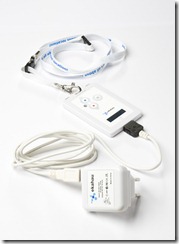Ozmo’s low-power Wi-Fi technology now with real silicon proof-of-concept
Articles
News articles
Ozmo’s WiFi PAN available Q4, is this the end of Bluetooth’s reign of terror? – Engadget
From the horse’s mouth
Ozmo Devices Announces Revolutionary Solution Powering World’s First Wi-Fi Mouse and Keyboard
Related Articles in this site
The Wi-Fi Personal Area Network is getting closer
Ultra-Low-Power Wireless Networking
My comments and questions
Previously I have covered the topic of WiFi technology being used as a “personal area network” for a computer, which comprises of peripheral devices like mice and keyboards communicating to a particular computer via the WiFi technology. rather than that technology being used to transfer data between computers and other devices in a local area network. What has happened is that Ozmo have come up with a real chipset for use in these devices that can use this medium as well as run for a long time on batteries. At the same time, Ozmo had built reference designs of wireless mice and keyboards that use this technology to communicate with their host devices.
One main question that I have about Ozmo’s effort is whether the same technology can be applied to devices that link directly to a Wi-Fi local area network’s access point rather than a particular computer? One main application that I see here with this technology would be Wi-Fi as a sensor / control network medium with devices like those that Ekahau had made as part of their Wi-Fi-driven real-time location technology, such as the pager tag which I had talked about in this site previously. Another application would be Internet radios, Wi-Fi-connected speakers and similar multimedia terminals that would be able to work on batteries as well as digital cameras that can upload to network storage or Internet sites or present to DLNA terminals without a severe penalty on battery life.
Another issue would be for a dedicated-function device like a set-top box or games console to support this kind of technology, whether as part of integrated Wi-Fi LAN functionality or as a Wi-Fi PAN setup as an alternative to Bluetooth or infra-red as a way of connecting peripherals, especially control peripherals.
It would be very interesting to see what comes of this technology once the silicon becomes fully available.

